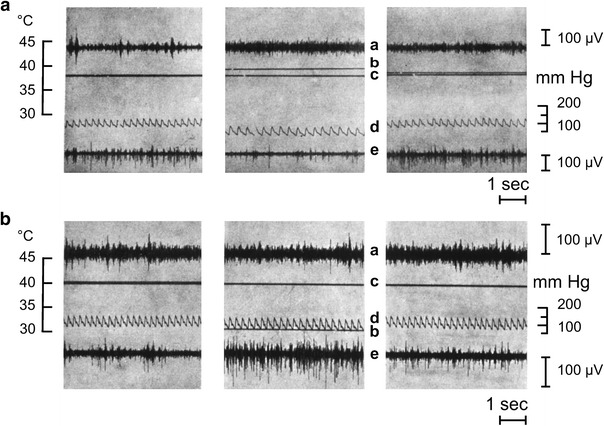Fig. 1.

Original recordings from two multi-fiber preparations in a cat. Trace a sympathetic nerve filament innervating the spleen (visceral); trace e postganglionic filament emerging from the superior cervical ganglion and supplying the skin at the lateral head and ear. Line c deep-body temperature; line b temperature in the peridural space of the vertebral canal. Temperature within the vertebral canal was changed by means of a water-perfused tube inserted into the peridural space to warm (a) or cool (b) the spinal cord. Trace d arterial pressure. Middle sections recordings during spinal cord warming and cooling. Left-hand sections recordings prior to thermal stimulation. Right-hand sections post-stimulation recordings. The cat was anesthetized and artificially ventilated because neuromuscular transmission had been blocked in order to suppress cold shivering in response to spinal cord cooling. Warming: splenic nerve activity is enhanced and cutaneous sympathetic activity is inhibited. Cooling: splenic nerve activity is slightly but visibly reduced and cutaneous nerve activity is distinctly enhanced. From Walther et al. [81]
